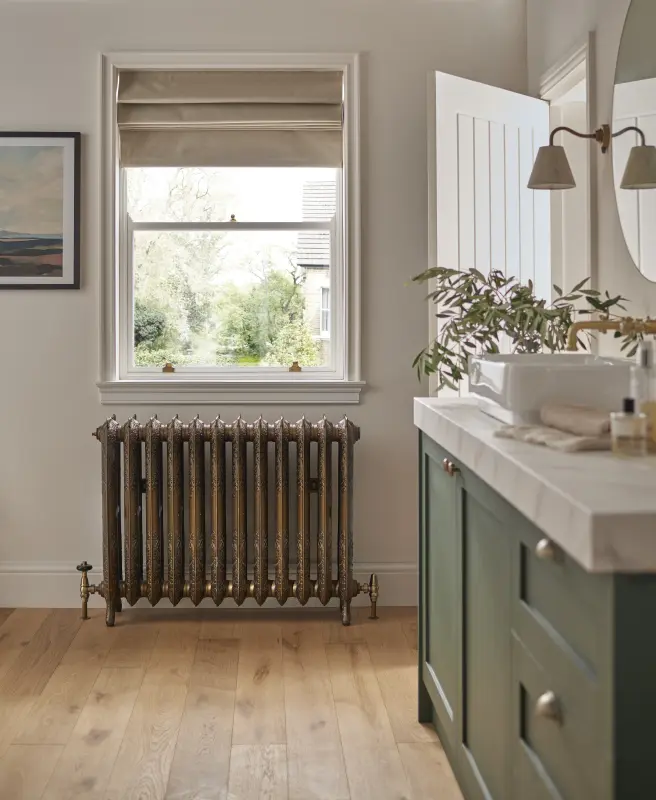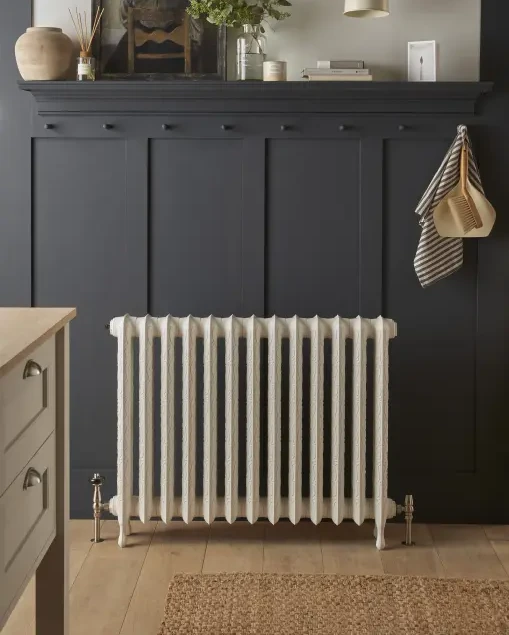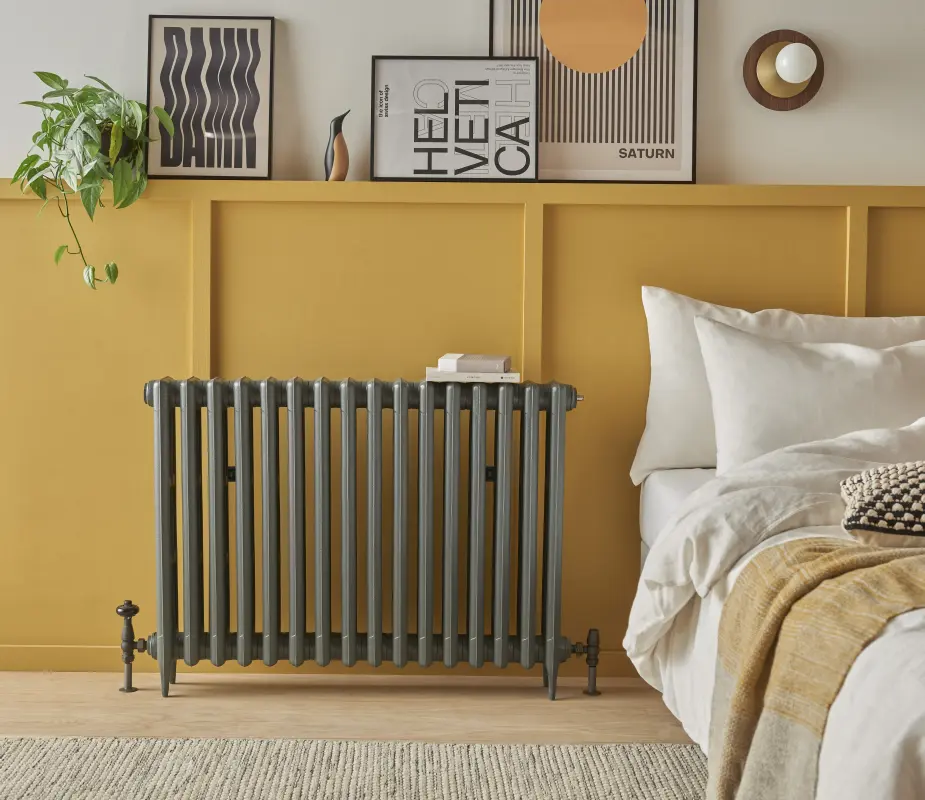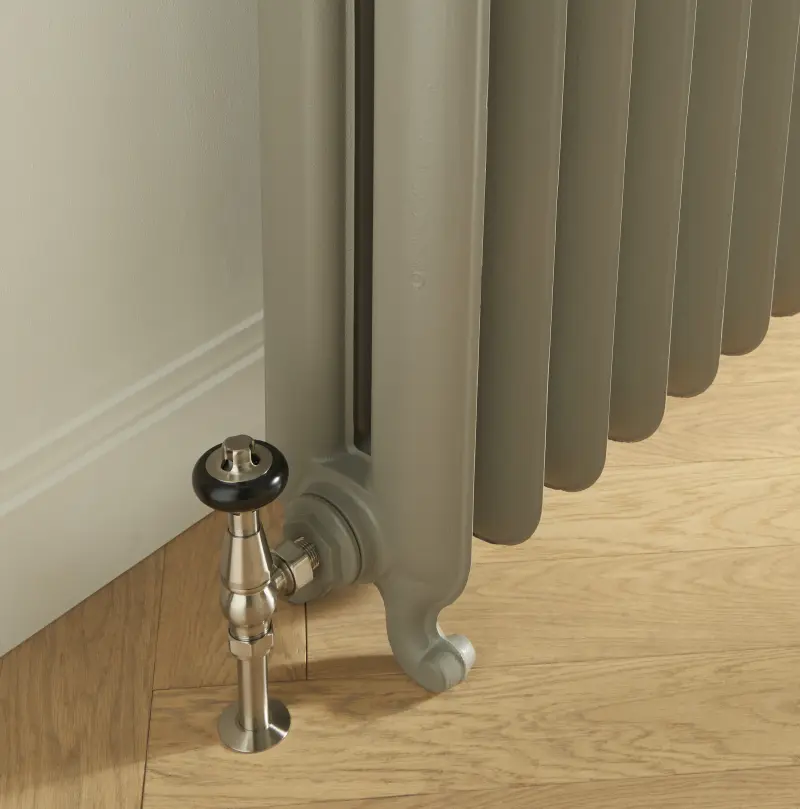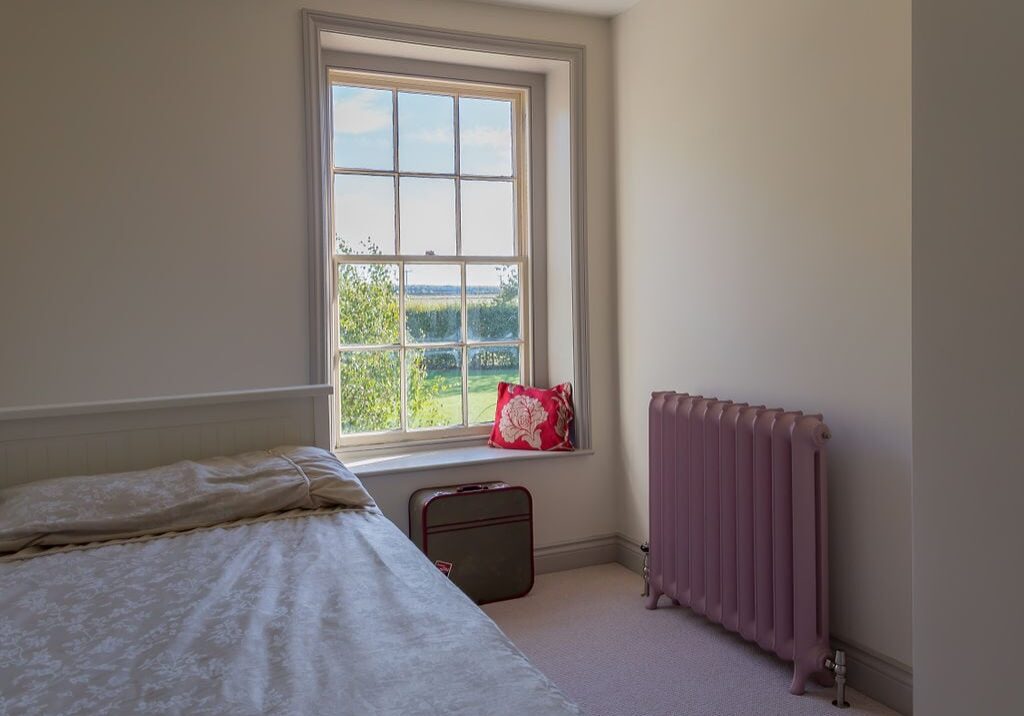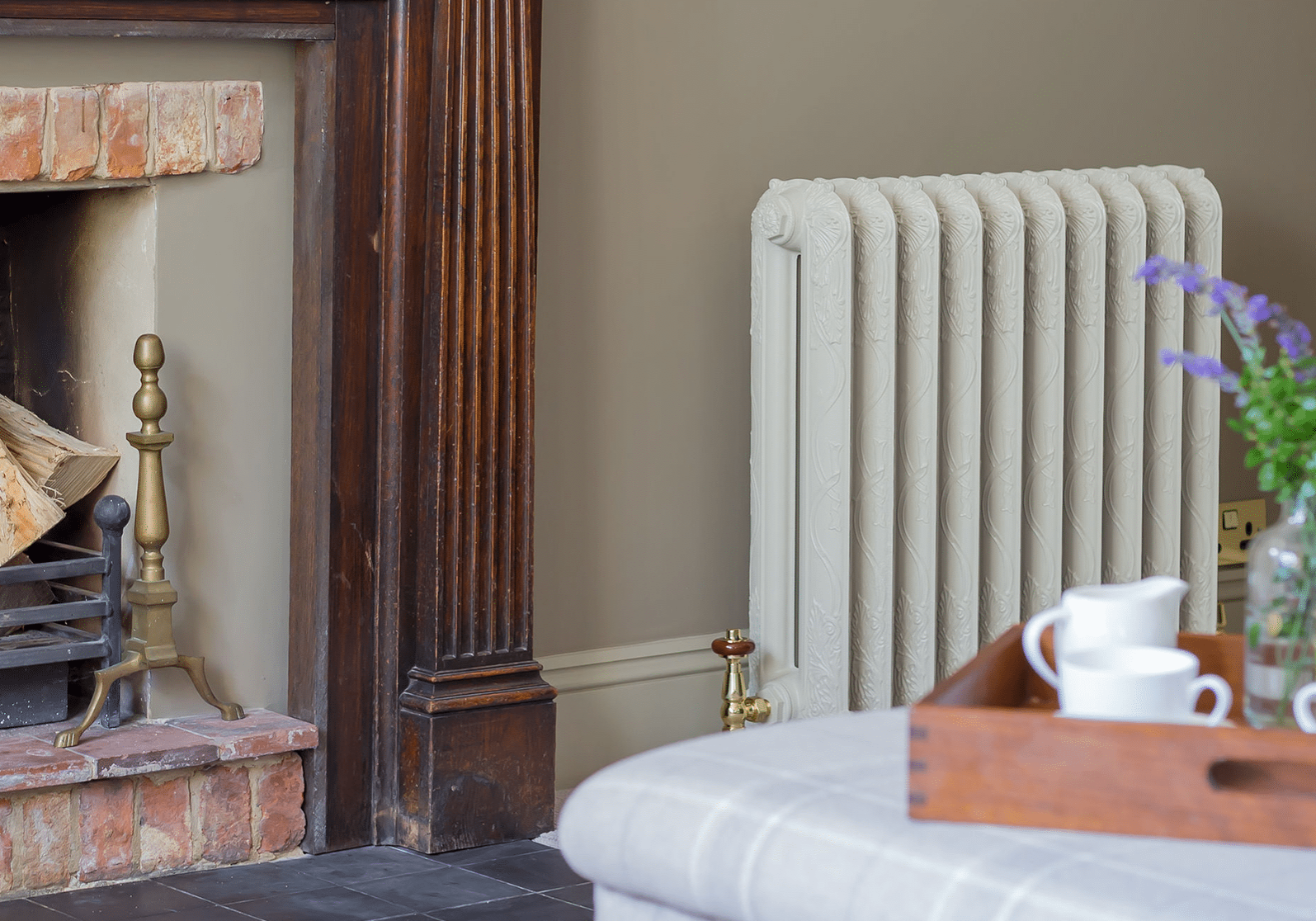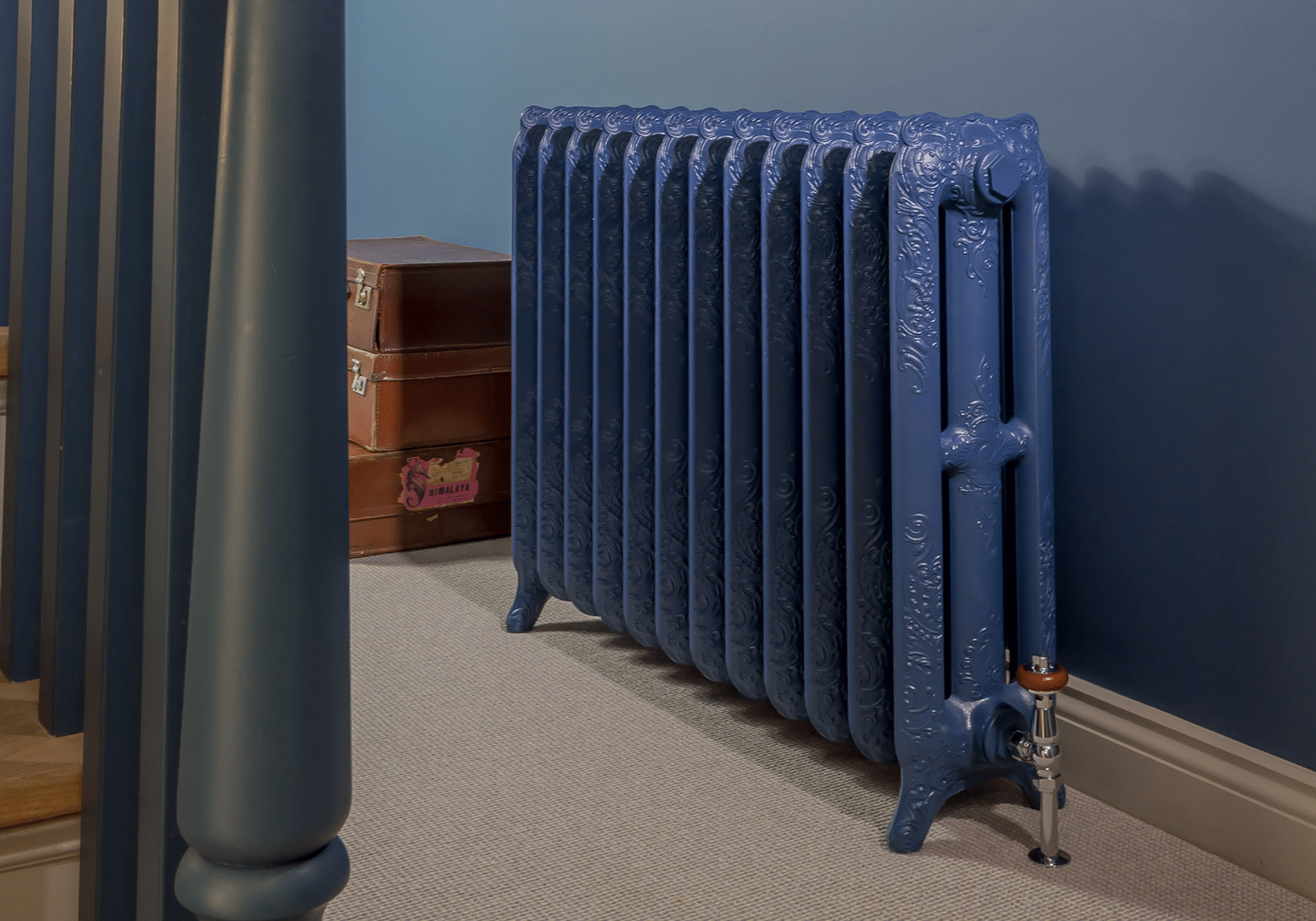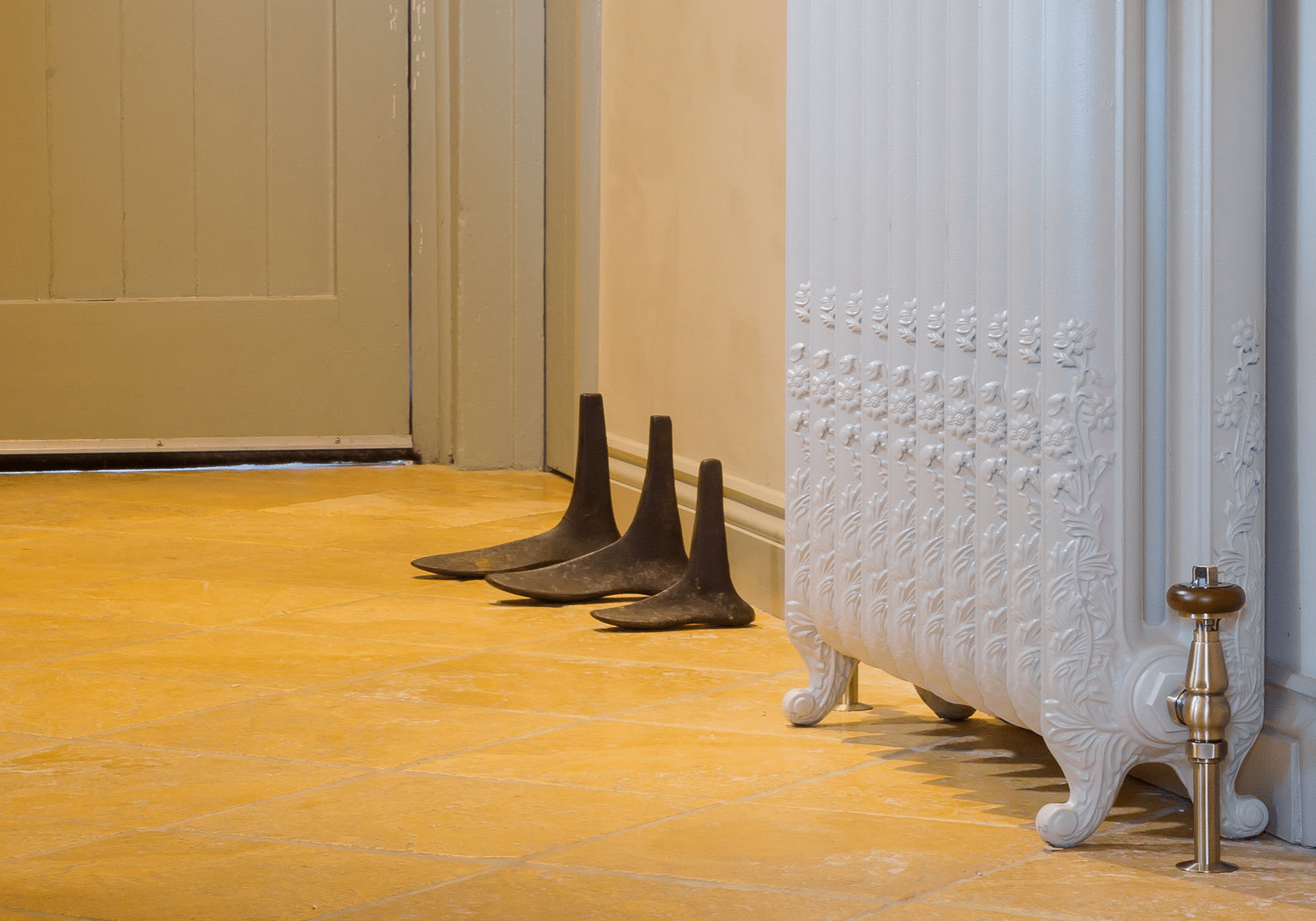How Do Electric Radiators Work?
Electric radiators convert electricity directly into heat using internal heating elements, providing warmth through convection and radiant heat. Unlike traditional central heating systems that rely on boilers and pipework, electric radiators operate independently: you plug them in or wire them to a fused spur, and they start warming your space. Modern electric radiators use thermostatic controls to maintain consistent temperatures efficiently, making them increasingly popular in UK homes seeking flexible, low-maintenance heating solutions.
More British homeowners are switching to electric heating as the cost of boiler replacements rises. With advancements in thermostatic technology and heat retention materials like cast iron, electric radiators now deliver efficient, reliable heating that adapts to how you actually live: room by room, schedule by schedule.
How do electric radiators work?
Electric radiators work by passing electricity through a heating element, which warms either a thermal fluid (usually oil) or a solid core material (such as ceramic or cast iron). This heated medium then releases warmth into the room through two complementary processes: convection, where warm air rises and circulates naturally, and radiant heat, which directly warms objects and people.
Unlike wet central heating systems that pump hot water through pipes, electric radiators generate heat precisely where you need it. There’s no boiler, no pipework threading through walls and no risk of leaks or pressure loss. You control each radiator independently using built-in thermostats or programmable timers.
Our electric cast iron radiators take this principle further by harnessing cast iron’s exceptional thermal mass. Once heated, cast iron retains warmth significantly longer than aluminium or pressed steel alternatives. Even after the heating element switches off, your radiator continues releasing gentle, consistent heat, reducing energy consumption and maintaining comfort. This makes our handcrafted electric radiators particularly effective for spaces where you want sustained warmth without constant power draw.
How do modern electric radiators work compared to older models?
Older electric radiators operated crudely. They switched on at full power until the room overheated, then switched off completely. This on-off cycling wasted energy and created uncomfortable temperature swings. Many lacked thermostats entirely, relying on manual switches or basic timers.
Modern electric radiators incorporate precision thermostatic controls that regulate heat output continuously. Rather than cycling between extremes, they maintain steady temperatures by modulating power to the heating element. Advanced models feature programmable timers, adaptive learning algorithms and smartphone connectivity, allowing you to schedule heating around your actual routine.
Our electric radiators use thermostatic 240V single-phase elements that respond intelligently to ambient temperature changes. You can set precise temperatures for different times of day, ensuring your hallway warms before your morning routine and your living room heats just before you return home. This responsiveness eliminates the energy waste that plagued earlier generations of electric heating.
Construction quality has also transformed. Cheap panel heaters still flood the market, but premium manufacturers now craft electric radiators from materials engineered for heat retention. Our cast iron construction stores thermal energy far more effectively than thin metal panels, meaning your radiator works less and delivers more consistent comfort.
Do electric radiators work well in UK homes?

Electric radiators work exceptionally well in UK homes when correctly sized and positioned. The key lies in matching radiator output (measured in Watts or BTUs) to your room’s heat loss, which depends on size, insulation quality, window area and external walls.
A well-insulated modern bedroom might need approximately 80-100 Watts per square metre. A draughty Victorian parlour with high ceilings could require 120-150 Watts per square metre. Our electric range spans from compact 420W radiators perfect for cloakrooms through to powerful 2,800W+ models capable of heating large open-plan spaces.
British homes benefit particularly from electric radiators’ zoning capability. Rather than heating your entire house through a single boiler, you warm only the rooms you’re using.
This suits how we actually live: working from home in a study during the day, relaxing in the living room during evenings, rarely using guest bedrooms except when visitors arrive.
Insulation matters enormously. In poorly insulated properties, any heating system struggles. However, electric radiators let you prioritise spending: install efficient electric heating in well-used rooms and gradually improve insulation elsewhere, rather than committing thousands to a new boiler system immediately.
Electric cast iron radiators work particularly well in British homes because they suit our architectural heritage. Whether you’re restoring a period property or adding character to a modern build, they deliver authentic aesthetics without compromising heating performance.
How do oil-filled electric radiators work?
Oil-filled electric radiators contain a sealed reservoir of thermal oil (or mineral oil) surrounding an electric heating element. When you switch the radiator on, electricity heats the element, which transfers thermal energy to the oil. The warmed oil circulates naturally through convection within the sealed body: hot oil rises and cooler oil sinks, distributing heat evenly throughout the radiator’s surface.
This oil never needs refilling or replacing. It’s sealed permanently during manufacture. The oil serves purely as a heat transfer medium, storing thermal energy and releasing it gradually. This gives oil-filled radiators their characteristic slow warm-up but excellent heat retention: they continue radiating warmth for approximately 1.5 to 2.5 hours after switching off, making them more energy-efficient than direct wire element heaters.
How do electric oil-filled radiators work differently from other types?
The sealed oil system prevents the abrupt on-off temperature cycling common with convector heaters. Instead, you get gentle, sustained warmth that feels more natural and comfortable. The radiator’s surface remains at a moderate, safe temperature rather than reaching scorching levels, reducing burn risks and dust circulation.
Cast iron retains heat far longer than the thin metal shells used in typical oil-filled panel radiators, extending that post-shutdown warmth period even further. You’re heating a substantial piece of engineering designed to last decades, not disposable pressed steel destined for landfill within five years.
How do ceramic electric radiators work?
Ceramic electric radiators use ceramic stones or blocks as their heat storage medium. Electric heating elements warm these ceramic cores, which then release stored thermal energy gradually through convection and radiation.
Ceramics excel at heat retention. They absorb thermal energy efficiently and discharge it slowly, creating stable ambient temperatures. Like cast iron, ceramic prevents the rapid temperature fluctuations that make cheap panel heaters uncomfortable. The material heats relatively quickly and maintains warmth long after the element stops drawing power.
Most ceramic radiators circulate air across the heated ceramic using small fans, boosting convection. This accelerates initial room warming but can create noise and circulate dust. Higher-quality ceramic radiators rely on natural convection and radiant heat alone, operating silently.
Ceramic offers good thermal performance, but it doesn’t quite match cast iron’s legendary heat retention. Cast iron radiators store substantially more thermal energy per kilogram than ceramic equivalents, meaning longer warmth duration and more consistent comfort levels between heating cycles.
How do electric bathroom radiators work?
Electric bathroom radiators work through the same heating element principles as other electric radiators but incorporate additional safety features required for humid, moisture-prone environments. They’re rated with IP (Ingress Protection) codes indicating their resistance to water exposure, typically IP44 or higher for bathroom installation.
These radiators must be wired to fused spurs positioned outside bathroom zones (usually in adjacent rooms or hallways) to comply with UK electrical regulations. Pull-cord switches provide safe in-room control without exposing live connections to moisture. Modern bathroom electric radiators include splash-proof thermostatic controls and sealed heating elements that operate safely even in steamy conditions.
Positioning matters critically in bathrooms. Mount electric radiators away from direct shower spray, provide clearance around baths and basins and ensure adequate ventilation. Bathrooms lose heat rapidly through extractor fans and tend to have proportionally more external wall area and tiling than other rooms, so you’ll need higher wattage per square metre: typically 100-120 Watts.
Our electric cast iron radiators bring elegance to utilitarian bathroom spaces. Whether you choose a compact vertical Oxford for an en-suite or a substantial Kensington for a family bathroom, you’re installing heating that enhances the room aesthetically and delivers dependable warmth and excellent heat retention.
How do smart electric radiators work?
Smart electric radiators connect to your home WiFi network, allowing control via smartphone apps, voice assistants or web dashboards. They contain integrated circuit boards that communicate heating status, receive programming instructions and monitor ambient temperatures.
These radiators learn your heating patterns over time, adjusting schedules automatically to match your lifestyle. Advanced models incorporate occupancy sensors that detect when rooms are empty and reduce heating accordingly. Some systems integrate with smart home ecosystems, allowing coordination with door sensors, weather forecasts and energy tariff data to optimise running costs.
The key advantage lies in genuine flexibility. Stuck late at work? Delay heating remotely rather than warming an empty home. Unseasonably mild weekend? Override your schedule with a single tap. Heading away for a few days? Set frost protection mode without visiting each radiator individually.
Smart thermostatic controls can retrofit to many existing electric radiators, including our cast iron range. However, ensure any aftermarket smart controls are compatible with your radiator’s wattage and heating element type. Professional installation guarantees safe wiring to fused spurs and integrates smart functionality properly.
How do WiFi electric radiators work?
WiFi electric radiators function identically to smart radiators. In fact, “WiFi electric radiators” and “smart electric radiators” describe the same technology. The WiFi connection enables remote control and scheduling through internet-connected apps.
When you adjust settings via your smartphone, commands travel through your home WiFi to the radiator’s onboard controller, which then modulates power to the heating element accordingly. The radiator continuously reports its status back through the same connection, showing current temperature, power consumption and operational status.
WiFi connectivity transforms electric heating from room-by-room management into true home-wide zoning. Create different schedules for every room, monitor total energy consumption, receive alerts about radiators running longer than expected (potentially indicating poor insulation or open windows) and fine-tune settings based on actual usage patterns rather than guesswork.
The practical benefit becomes obvious during British winters: arrive home to consistent warmth without heating empty rooms all day, automatically reduce temperatures overnight and maintain frost protection, and adjust multiple radiators simultaneously rather than visiting each manually.
Electric-radiator diagrams typically show a cutaway view revealing internal components and heat flow patterns. You’d see the heating element, usually depicted as a coiled wire or rod, positioned centrally or along the base. Surrounding this, the diagram shows either thermal oil filling the cavity (for oil-filled models) or solid material like ceramic or cast iron conducting heat.
Arrows illustrate two heat distribution paths: convection currents showing cooler air entering at the base, warming against the hot surface and rising upward, and radiant heat waves emanating directly from the surface toward room contents. More detailed diagrams include thermostatic controls, wiring connections to fused spurs and temperature sensors monitoring ambient conditions.
For cast iron electric radiators like our range, diagrams would emphasise the substantial thermal mass surrounding the element. The cast iron sections absorb and store heat energy, releasing it gradually through their ornately detailed surfaces. This thermal storage capacity appears visually as the thick material surrounding relatively compact heating elements.
Understanding these component relationships helps you appreciate why construction quality matters. Cheap panel radiators show minimal material between element and surface: heat escapes rapidly, elements cycle constantly and comfort suffers. Premium cast iron construction demonstrates substantial thermal mass between element and room, explaining the sustained, even warmth these radiators deliver.
Which electric radiators work best for different room sizes?
Our electric cast iron radiator range spans from compact 420W models through to powerful multi-section configurations exceeding 2,800W, ensuring appropriate sizing for virtually any UK room.
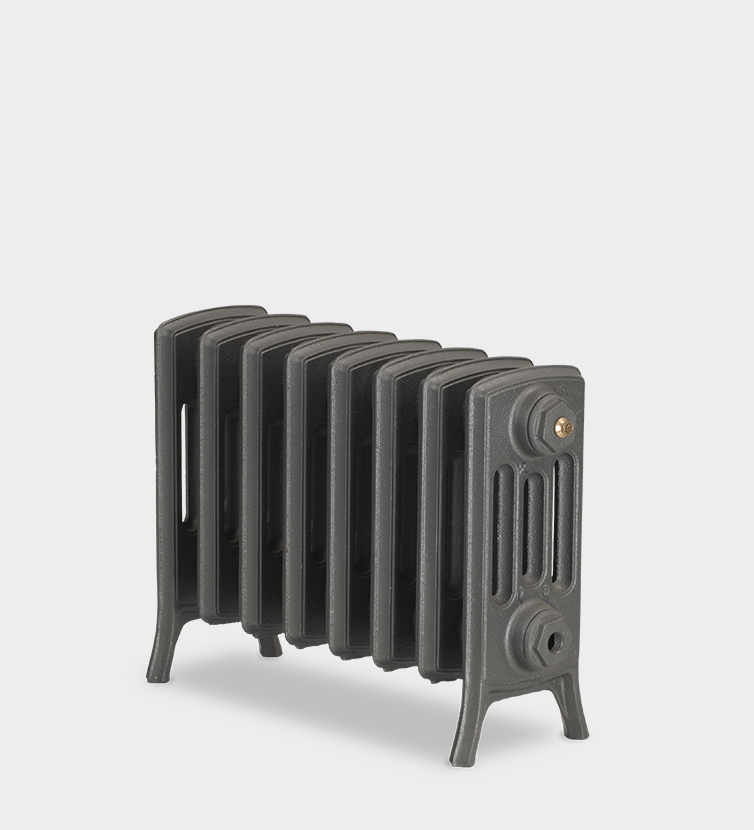
For small spaces like cloakrooms, utility rooms and compact en-suites, the Neo Georgian 4-column electric radiator in shorter lengths (around 420-600W) provides sufficient warmth without overwhelming limited wall space. These maintain our signature ornate detailing and fit neatly into tight areas.
For medium rooms like standard bedrooms, studies and bathrooms, radiators in the 800-1,200W range work best. The Victoriana, Oxford and Kensington models offer elegant period styling with heating outputs perfectly matched to typical 10-15 square metre rooms with reasonable insulation. Single or dual heating elements provide flexibility: choose dual elements for faster heating response in frequently used spaces.
For large living rooms, open-plan kitchen-diners and master bedrooms with en-suite areas, you’ll need 1,500-2,500W outputs. Longer configurations of the Churchill, Bartholomew or Louis ranges deliver substantial BTUs and serve as stunning architectural features. Cast iron’s heat retention becomes particularly valuable in these larger spaces: sustained warmth distribution prevents cold spots and reduces running costs.

For challenging rooms with poor insulation, high ceilings or significant glazing, consider oversizing slightly. A 2,800W Piccadilly might seem excessive for a nominally 20 square metre room, but if that room features a bay window and solid external walls, the additional capacity ensures comfortable temperatures without the element running constantly.
What should you consider when choosing an electric cast iron radiator?
Start with accurate heat loss calculations. Measure your room dimensions, assess insulation quality, count external walls and windows, note ceiling height and consider typical usage patterns. Online BTU calculators provide baseline figures, but our technical team offers personalised advice accounting for your specific property characteristics.
Positioning significantly affects performance. Site radiators beneath windows where cold downdrafts occur, allowing rising warmth to counteract cold infiltration. Ensure adequate clearance, typically 100-150mm from floors and 50mm from walls, for proper air circulation. Avoid placing radiators behind furniture or curtains that obstruct heat distribution.

Aesthetics matter equally with electric cast iron radiators because you’re not constrained by pipework routing. Choose styles that complement your interior: ornate Kensington or Oxford models for period properties, streamlined Neo Georgian designs for contemporary spaces or the distinctive Piccadilly with its ornate bush ends for statement installations.
Thermostatic control investment pays dividends. Programmable thermostats with multiple daily setpoints let you match heating precisely to occupancy patterns. WiFi-enabled smart controls provide ultimate flexibility but represent additional expense. Evaluate whether remote control justifies the premium based on your lifestyle.
Consider wattage flexibility. Some of our electric radiators accommodate single or dual heating elements, allowing you to upgrade heating capacity without replacing the entire radiator if you later improve insulation or change room usage.
Finish selection extends beyond aesthetics and affects maintenance requirements. Our partnership with Farrow & Ball offers hundreds of bespoke colour options. Polished metallic finishes like burnished brass or antique copper require occasional care to maintain their lustre. Painted finishes prove more forgiving for busy households.
Bespoke finishing capabilities distinguish us from factory-standard alternatives. Request your radiator in any Farrow & Ball colour, specify antiquing or highlighting to emphasise ornate details, choose polished metallic finishes or request custom colour matching. Each radiator receives individual attention from skilled craftspeople who take genuine pride in their work.
The 10-year guarantee demonstrates confidence in longevity. Electric cast iron radiators aren’t disposable appliances. They’re heating investments designed to serve your home for decades. When installation and running costs are amortised across a realistic 30-40 year lifespan, premium quality proves remarkably economical.
Our range offers genuine variety: 18 distinct styles spanning Victorian authenticity through Art Deco glamour to contemporary minimalism. Whether restoring a Georgian townhouse, renovating a Victorian terrace or adding character to a new-build, you’ll find electric radiators that suit your aesthetic vision and deliver dependable warmth.
Models including the Bartholomew, Churchill, Clarendon, Gatsby, Louis, Montpellier, Pimlico, Shaftsbury, Sloane, St Paul and various Neo Georgian configurations ensure you’re never compromising style for heating capacity or vice versa.
Ready to explore electric cast iron heating?
Discover how electric cast iron radiators combine tradition with modern heating technology, delivering sustainable, controllable comfort that enhances your home for generations.
Electric radiators have evolved far beyond basic panel heaters. With intelligent thermostatic controls, exceptional heat retention and the flexibility to heat individual rooms independently, modern electric cast iron radiators deliver efficient, beautiful warmth tailored to how you actually live.
Whether you’re heating a single room lacking central heating pipework, replacing an aging boiler system with zoned electric heating or adding supplementary warmth to specific spaces, our team provides expert guidance. Visit our showroom in Lincolnshire to experience the quality and craftsmanship firsthand, explore our radiator configurator to visualise options for your spaces or contact us for personalised recommendations based on your specific requirements.
“I want to say thanks and how fantastic the radiators look along with the cast quality and the excellent painting and polishing finish. I now can’t wait to get them installed! Many thanks again for all your help and assistance.”
“Thank you for all your help, we will definitely recommend Paladin to anyone we know who is looking for cast iron radiators and will get in touch when we’re needing radiators for our ground floor.”


